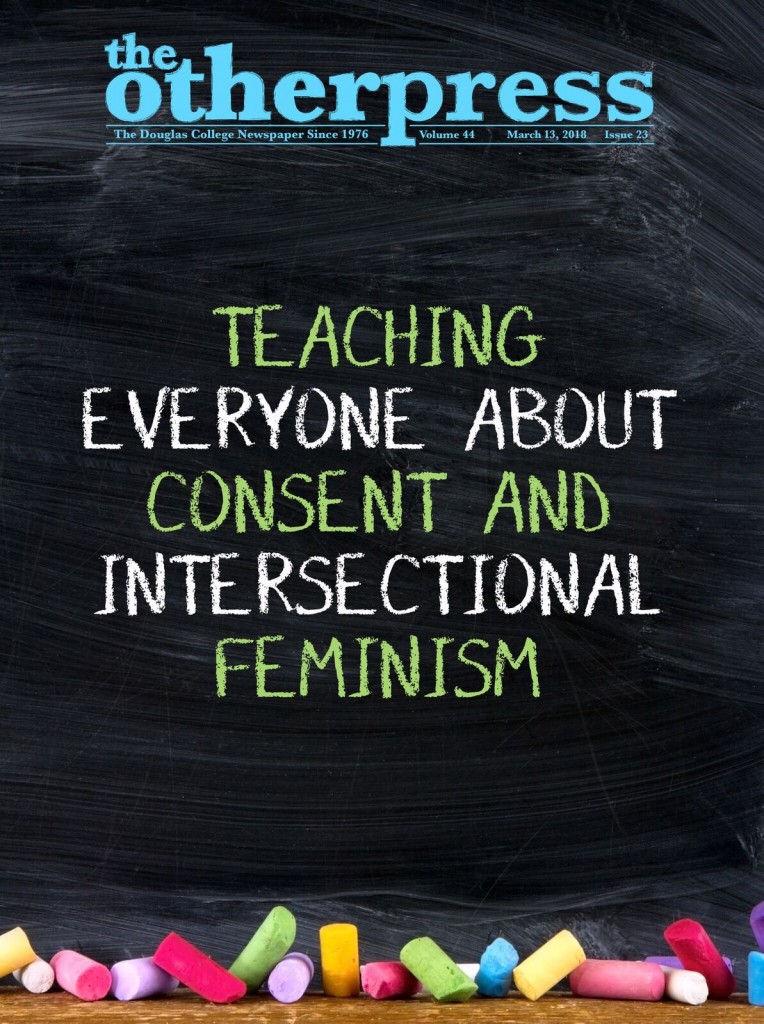
It’s not just about sex
By Kwiigay Iwaans, Layout Manager
I remember learning about consent in middle school, with one or two puppet shows over as many months. The shows covered few [specific details] scenarios, but they only focused on sexual consent. They didn’t teach you what to do when your [parent] orders you to hug your great uncle [name], or when grampy [name] pinches your cheek at [holiday] dinner. These kinds of scenarios can be uncomfortable as a kid but because of our size, age, etc., we were easier to ignore and speak over.
But what happens when a kid’s boundaries are crossed too often? Chances are they’ll lose their ability to self-advocate, which leads to the long and dusty road of danger and disappointment. To learn those skills, I took the long way around—through trial and error. It took me until my twenties to confidently juggle being mindful of those around me along with looking after myself. I’ve had countless conversations with folx of my generation and heard story after story that are similar to mine. As adults, we recognize through unspoken social rules that consent is something we need to give and receive in many more contexts than those that are strictly sexual. For all of our youth, we only wish for them to grow into well-adjusted, confident, and successful adults. Clearly, we need to do more to better equip them in all contexts, because these skills will last them for the rest of their lives.
Depending on a person’s social determinants of health (physical and mental health, physical and mental ability, sexual orientation, gender, age, race, substance use, and experience of childhood abuse) we can see rates of sexual assault increase drastically. Teaching kids about these kinds of differences in their communities is really teaching them the ways in which we can each hold privilege or be marginalized. This opens the door to talk about power dynamics in our relationships (which are not always bad, many are important for our growth), and how they can affect a person’s ability to set boundaries. In order to fully understand consent, we must include conversations around non-verbal cues, which aren’t so easily understood.
Be aware of their intersecting identities
Learn how those identities interact with others.
Teach them how to set boundaries
Let children know it’s okay to restate boundaries as often as they need to and let them know that if someone disrespects their boundaries it’s okay to not want to be around that person.
Teach them how to be proactive in asking for consent from others
It’s a useful harm reduction tool and serves to protects everyone in our communities in the long run.
Safe words are good too!
Sometimes it’s easier to say “goldfish” than “stop.”
Teach them to trust their instincts
We each know our own body the best!
Have conversations with them about consent
Show them you’re open and available to have these sometimes-complicated conversations.
Teach them what to do when they’ve messed up
Centre the affected party in your reparations. Have friends in your life you have asked to hold you accountable in such situations and learn from the experience.
Lead by example
Never force a young person to hug, kiss, or touch someone if they don’t want to. Instead practice asking them if they want to hug at all.
Listen to them when they state a boundary
Respect the boundaries they set.
The simplest way to empower our youth, so they may grow into confident adults, is to give them these tools. We should also be sure, as adults, to be checking in with ourselves and taking an active role in learning about these issues, regardless of if we have kids or not.
Online Resources:
http://www.teachconsent.org/#ask
https://teachingsexualhealth.ca/parents/information-by-topic/understanding-consent/
https://www.canadianwomen.org/the-facts/sexual-assault-harassment/



